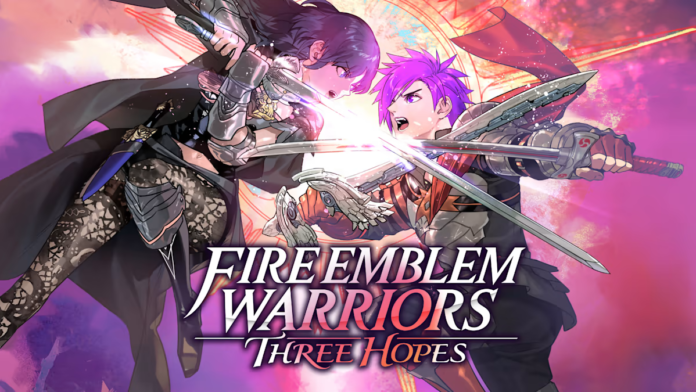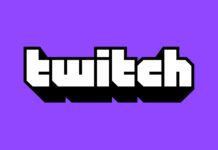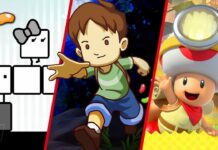Koei Tecmo’s ‘Warriors’ series has come a long way. What started off in 1997 as Dynasty Warriors, a hack-and-slash spin-off of their own turn-based strategy franchise Romance of the Three Kingdoms, has become something so much more. Dynasty Warriors ended up being so successful that it spawned its own set of spin-off spin-offs, eventually earning itself development partnerships with Nintendo to use two of their biggest RPG franchises: The Legend of Zelda and Fire Emblem. Following the success of Hyrule Warriors on Wii U and 3DS, October 2017 saw the release of Fire Emblem Warriors for Switch and New 3DS. Almost five years later, just two years after Hyrule Warriors got its own sequel in the form of Hyrule Warriors: Age of Calamity, it’s time for the next logical step in the evolution of the Warriors series – Fire Emblem Warriors: Three Hopes.
As soon as Hyrule Warriors: Age of Calamity was revealed to be a prequel to GOTY-winner The Legend of Zelda: Breath of the Wild, speculation began on if Fire Emblem Warriors would be getting the same treatment. Sure enough, in the Nintendo Direct presentation that aired in February 2022, Fire Emblem Warriors: Three Hopes was announced, taking place in an alternate timeline within the Fire Emblem: Three Houses universe. While the original Hyrule and Fire Emblem Warriors games were a general hack-and-slash adaptation of their respective series as a whole, the sequels focus on the story and characters of the latest mainline titles.
Your enjoyment of the plot will largely be dependent on if you’ve played Three Houses, as Three Hopes is filled to the brim with familiar faces, references, and fan-service. Fire Emblem: Three Houses sold over 3.4 million copies on Nintendo Switch, making it not only the best-selling game in the Fire Emblem series, but the best-selling tactical-RPG of all time; beating Fire Emblem Fates’ previous recorded record of 2.94 million, according to Guinness World Records. Seeing as the very game it’s based on sold so well, surely the intended targeted audience for Three Hopes is fans who have already experienced Three Houses. If you’re interested in the Warriors style hack-and-slash gameplay but haven’t stayed caught up with Fire Emblem, purchasing the original Fire Emblem Warriors would make much more sense as an introduction.
Warriors games, particularly running on Nintendo Switch, have a reputation of performing quite poorly on a technical level due to their high graphical fidelity and sheer abundance of enemies that often appear on screen at once. Despite being critically acclaimed otherwise, framerate issues was one of the biggest complaints about Age of Calamity upon its release. While I don’t have access to the necessary equipment to perform an analysis (we’ll have to wait on Digital Foundry for that), my first impressions of Three Hopes shows that its framerate is a lot more consistent, with very little noticeable stutter to my naked eye, even when playing two-player split-screen mode. For some however, it may come as bad news that the framerate is always capped at 30fps. The original Fire Emblem Warriors featured a setting to choose between Quality Mode (1080p 30fps) and Performance Mode (720p 60fps), but Three Hopes does not appear to have that option. On a happier note though, loading times are absolutely exceptional, and I was extra impressed due to how great the game looks visually overall.
Fire Emblem Warriors: Three Hopes takes place in the war-ridden continent of Fódlan, and starts off with a relatively lengthy prologue that introduces its original main character, Shez, who can be either male or female depending on your selection. He/she is a mercenary assigned to defeat The Ashen Demon, Byleth, who is a character you’re no doubt familiar with thanks to their appearance in Super Smash Bros. Ultimate. Shez is bestowed with a mysterious power provided to them by Arval, an even more mysterious and snarky guardian angel-like being that only Shez can see and interact with. Gameplay segments are initially sparse as the game sets up its complex plot, but things pick up pace after you encounter Edelgard, Dimitri, and Claude, who are set to later become the leaders of Fódlan’s three nations: the Adrestian Empire, the Holy Kingdom of Faerghus, and the Leicester Alliance. Soon enough, you’ll find yourself at the Officers Academy in Garreg Mach Monastery, a school with three houses to separate the students of each nation. These three houses, Black Eagle House, Blue Lion House, and Golden Deer House, are led by none other than Edelgard, Dimitri, and Claude respectively. Through a series of events, Shez is invited to become a student, and must select a house to reside in. The choice you make will greatly impact the direction of the storyline for the rest of your playthrough, as well as which characters will eventually become playable during gameplay.
Apart from the visual novel-style story elements, the core gameplay of Fire Emblem Warriors: Three Hopes is set up in a way where virtually everyone can find enjoyment in it. Before even starting the game, you’re prompted to select a difficulty (Easy, Normal, or Hard), game mode (Casual or Classic), and play style (Slow and Steady or Quick and Efficient). Combining the real-time hack-and-slash action of the Warriors series with the RPG elements of the Fire Emblem series creates an easy to swallow RPG for even people who don’t necessarily like RPGs. If you want to go the Easy/Classic/Quick and Efficient route, you can simply take in the satisfying button-mashing combat, plowing through hundreds of enemies in your path, without having to worry too much about classes, stats, experience points, or issuing orders to units. On the flipside, those more invested in the genre can opt for a more traditional RPG experience by choosing to fully utilize those aspects.
Between battles, you’ll enter into a designated camp where you can interact with your allies, access various facilities, and partake in activities. Some of these things help you to increase your support level and morale with other playable characters, granting you all kinds of advantages in battle. Methods of earning support points include volunteering at the chore master with allies, or cooking meals for them with recipes you’ve acquired. Spread across the camp, there’s a shop, armory, training grounds to level-up and acquire new classes, a reward master to earn items for completing listed achievements, and much more. You can even invite allies on expeditions, allowing you to engage in relaxing conversations with them as a potential way to get more support points. These sessions are purely fan-service. If you select the proper dialogue options, you will be rewarded with a moment to observe your ally, “respectfully, of course.”
Fire Emblem Warriors: Three Hopes looks to be a bigger, better, more ambitious sequel to Fire Emblem Warriors. It leans heavier on storytelling, which is sure to excite hardcore fans of Three Houses, and the gameplay I’ve experienced so far feels generally more polished and refined, which honestly says a lot considering how much I enjoyed the original. Returning characters from Three Houses have retained their personality and individuality, and newly introduced ones fit in quite nicely. There is so much to cover that this preview barely scratches the surface of what’s in-store, so make sure to look out for our full review of Fire Emblem Warriors: Three Hopes before the double-sequel launches exclusively for Nintendo Switch on 24th June 2022.
A copy of Fire Emblem Warriors: Three Hopes for preview purposes was provided by Nintendo UK. A full review of the game will be published in due course.
Related
mynintendonews.com







